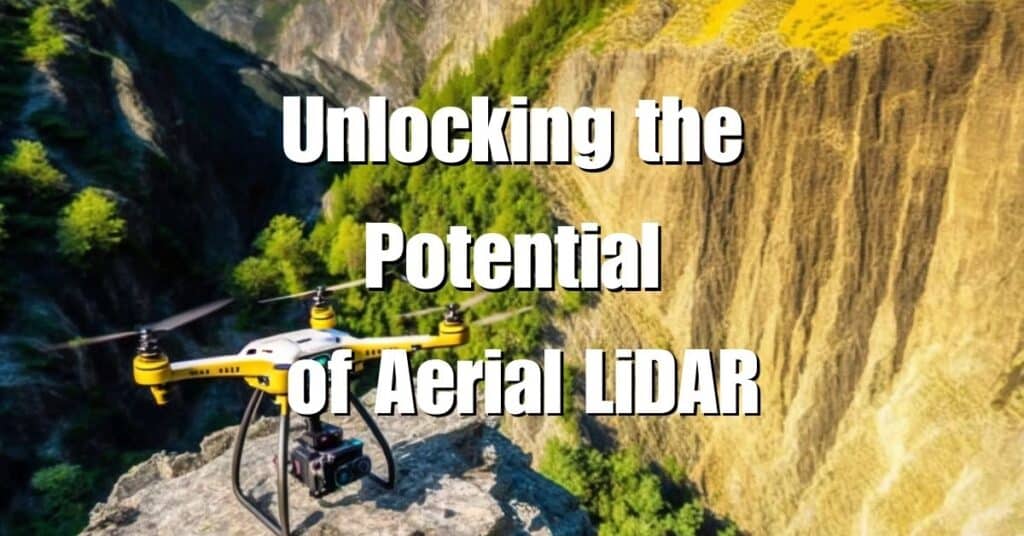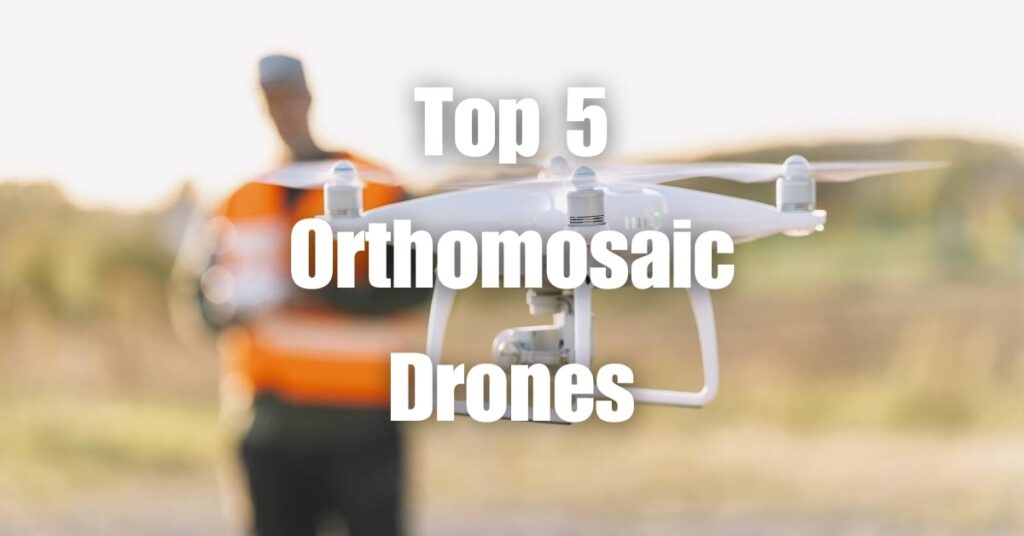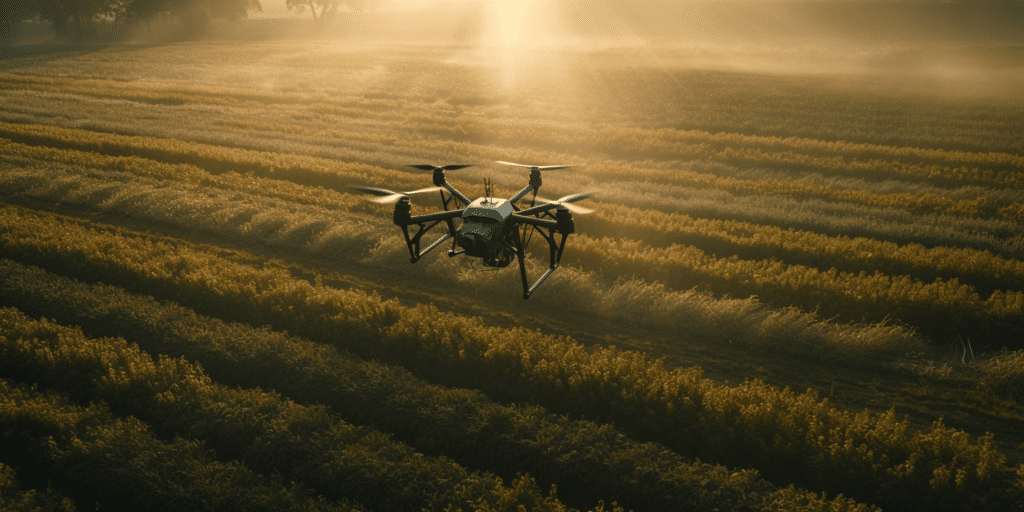Aerial LiDAR (Light Detection and Ranging) is a groundbreaking technology that has revolutionized the way we gather and analyze data from our environment. Utilizing laser-based sensors mounted on aerial platforms, such as airplanes or drones, it captures high-resolution, three-dimensional images of landscapes and structures with unmatched accuracy and speed.
How Aerial LiDAR Works
Aerial LiDAR systems function by emitting laser pulses towards the ground and measuring the time it takes for the light to bounce back to the sensor. The data collected from these pulses are then processed to generate detailed and accurate topographical maps, which can be used for various applications across numerous industries.
Applications of Aerial LiDAR
Aerial LiDAR technology has made significant impacts in a wide range of fields, including:
Geospatial Mapping and Surveying: Aerial LiDAR systems have become indispensable tools for surveyors and geospatial professionals, enabling them to generate precise and up-to-date elevation data, contour maps, and other topographical information.
Environmental Monitoring and Conservation: Aerial LiDAR plays a crucial role in monitoring natural resources, assessing habitat conditions, and informing conservation strategies. It allows researchers to accurately measure biomass, identify tree species, and track changes in ecosystems over time.
Urban Planning and Infrastructure: Aerial LiDAR is vital for urban planners and civil engineers when designing new infrastructure projects, assessing existing structures, and analyzing the impact of development on the environment. It can be used to create detailed 3D models of cityscapes and visualize how proposed projects will affect surrounding areas.
Archaeology and Cultural Heritage: Aerial LiDAR has opened up new possibilities for archaeological research by revealing hidden features buried beneath dense vegetation or obscured by natural terrain. It has led to the discovery of previously unknown archaeological sites and helped researchers to better understand ancient landscapes and cultures.
Natural Disaster Management: Aerial LiDAR is an invaluable tool for emergency response teams, enabling them to assess damage caused by natural disasters such as floods, earthquakes, and landslides, and to plan for effective disaster mitigation and recovery strategies.
Benefits of Aerial LiDAR Technology
The widespread adoption of aerial LiDAR technology can be attributed to the numerous benefits it offers, such as:
Accuracy and Precision: Aerial LiDAR provides highly accurate data, even in complex terrains and densely vegetated areas, enabling users to make informed decisions based on reliable information.
Speed and Efficiency: Aerial LiDAR systems can cover vast areas quickly, reducing the time and effort required for data collection compared to traditional surveying methods.
Flexibility and Versatility: Aerial LiDAR can be adapted to various applications, making it a versatile solution for diverse industries and projects.
Minimal Environmental Impact: Aerial LiDAR is a non-invasive technology that does not require physical contact with the ground, reducing the risk of damage to sensitive environments or cultural heritage sites.
Cost-Effectiveness: The speed, efficiency, and accuracy of aerial LiDAR can lead to significant cost savings compared to traditional surveying methods, particularly for large-scale projects.
Enhanced Precision and Efficiency with Aerial LiDAR Technology
Traditional surveying methods, such as ground-based surveys, are labor-intensive and time-consuming. In contrast, Aerial LiDAR technology has revolutionized data collection by offering remarkable speed and accuracy. This advanced method can cover vast areas rapidly, generating high-resolution data with an accuracy usually within a few centimeters. The increased efficiency facilitates more frequent data collection, which is crucial for various applications like environmental monitoring, urban planning, and infrastructure management.
Minimizing Risk and Human Error through Aerial LiDAR
A significant advantage of using Aerial LiDAR technology is the enhanced safety it provides. Conventional surveying methods often involve working in hazardous conditions, such as challenging terrain, extreme weather, or congested urban environments. Aerial LiDAR eliminates the need for human presence in these dangerous situations, reducing the risk of accidents and injuries.
By minimizing human intervention, Aerial LiDAR also reduces the potential for human error, ensuring more reliable and accurate data collection.
Aerial LiDAR: The Future of Cost-effective Data Collection
While the initial investment in Aerial LiDAR technology can be substantial, its numerous benefits often outweigh the costs in the long run. Aerial LiDAR significantly reduces the need for manual labor and time-consuming ground surveys, providing substantial cost savings for large-scale data collection projects.
Furthermore, the increased efficiency and accuracy of data collection can lead to more informed decision-making, ultimately conserving resources and improving outcomes across various industries. As a result, Aerial LiDAR technology has become an essential tool for cost-effective data collection and analysis, paving the way for a more efficient and sustainable future.
Aerial LiDAR: The Environmental Impact and Sustainability
Aerial LiDAR technology not only revolutionizes data collection but also has a positive impact on the environment. By reducing the need for manual labor and time-consuming ground surveys, it minimizes human intervention in delicate ecosystems. As a result, this technology aids in preserving natural habitats and reduces the overall environmental footprint associated with traditional surveying methods. Furthermore, Aerial LiDAR can help monitor and track changes in ecosystems, contributing to more sustainable resource management and conservation efforts.
Integrating Aerial LiDAR with Other Technologies
The potential of Aerial LiDAR is further enhanced when combined with other advanced technologies, such as Geographic Information Systems (GIS) and Remote Sensing. These integrations can provide even more comprehensive insights and analysis, facilitating better decision-making across various industries.
For instance, integrating Aerial LiDAR data with GIS can help visualize complex spatial relationships, allowing for a deeper understanding of how different factors interact within an environment. Additionally, combining Aerial LiDAR with Remote Sensing technologies can provide multi-dimensional data, capturing information about vegetation, soil, and water conditions, among other aspects.
The Future of Aerial LiDAR: Innovations and Developments
As technology continues to advance, we can expect to see new innovations and developments in Aerial LiDAR. Researchers and engineers are consistently working on improving the accuracy, efficiency, and versatility of Aerial LiDAR systems, leading to even more applications and benefits.
Some of the potential advancements include miniaturization of LiDAR sensors, allowing for more affordable and accessible systems, as well as the development of multispectral LiDAR, which can collect data at different wavelengths to provide more in-depth information about an area. These innovations will continue to shape the future of Aerial LiDAR technology, driving further growth and success in various industries.
Conclusion and Recommendation
In conclusion, aerial LiDAR is a revolutionary technology that has transformed the way we collect, analyze, and utilize geospatial data. Its numerous benefits, such as accuracy, speed, and flexibility, have made it an essential tool for various industries, from environmental monitoring to urban planning.
To further explore the applications and benefits of aerial LiDAR technology, we highly recommend visiting Blue Falcon Aerial’s comprehensive guide. This resource will provide you with an in-depth understanding of how aerial LiDAR is employed across different sectors and how it contributes to the advancement of scientific research, sustainable development, and effective decision-making. By deepening your knowledge of this cutting-edge technology, you’ll be better equipped to leverage its potential and unlock new opportunities for innovation in your field.




